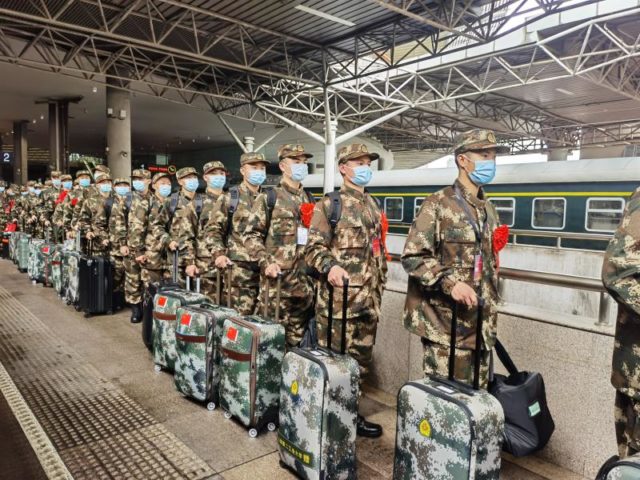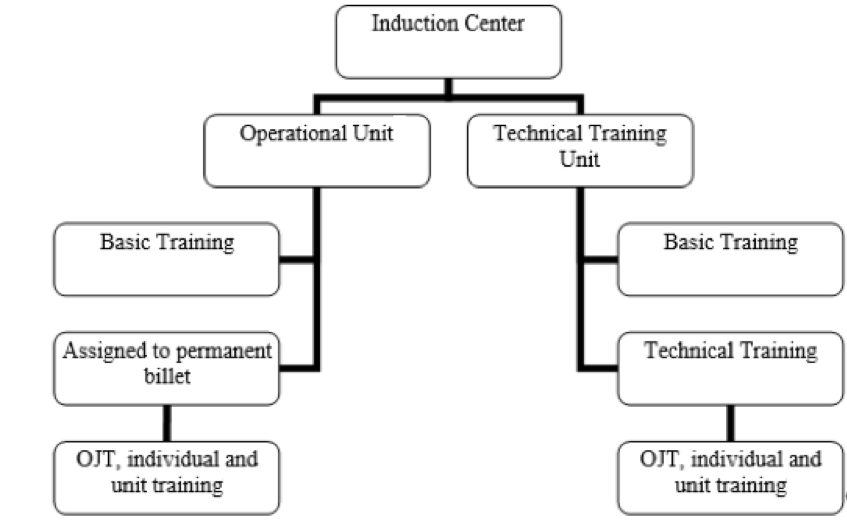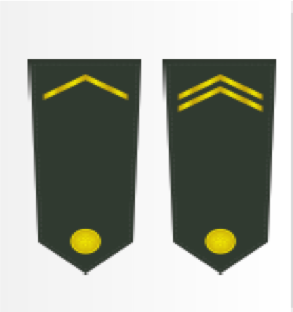
The Evolution of the PLA’s Enlisted Force: Training (Part Two)
Publication: China Brief Volume: 22 Issue: 3
By:

Introduction
On January 4, 2022, Chinese President and Central Military Commission Chairman Xi Jinping issued a mobilization order for the People’s Liberation Army (PLA) to begin its annual training cycle. In the directive, Xi called on the PLA to “closely track the evolution of technology, warfare, and adversaries, to better combine training with combat operations, and to strengthen systematic training and the use of technologies to develop an elite fighting force” (Gov.cn, January 4).
The PLA’s annual training has always been closely tied to its enlisted force recruitment and conscription cycle. The first article in this series details China’s efforts to develop a more educated and professional military, examining the PLA enlisted force’s evolution from an all-volunteer force, to a conscript military, to a mixed force comprised of volunteers and conscripts (China Brief, January 14). This article uses the PLA Air Force (PLAAF) as a case study to examine the development of the PLA’s training for new enlisted personnel and raises questions for consideration regarding the two-cycle enlisted force conscription process implemented last year.
New Soldier Training Before 2015
Prior to 2015, as shown in Figure 1, all newly enlisted personnel either went directly to a training base, where they received basic training and then their specialty training, or went directly to their operational bases, where they were assigned to a “new soldier company” and, depending on the number of new personnel, into “new soldier battalions,” each of which had at least three companies. [1] Junior non-commissioned officers (NCOs) and officers from the operational unit were assigned to oversee their basic training. The PLA does not have any single training bases like the U.S. Air Force’s Lackland Air Force Base, the U.S. Army’s Fort Benning or Fort Jackson, or the U.S. Navy’s Great Lakes Recruit Training Command.
Figure 1: New Soldier Training Options

Conscripts who completed their basic training at an operational unit were then assigned to their permanent billet within an all-enlisted force squad, which are subordinate to a platoon. Each platoon is under a company, which, in turn is subordinate to a battalion. Once new soldiers assume their billet, they began to receive on-the-job training (OJT). The unit then began step-by-step training for the squads, platoons, companies, and battalions over the next few months. Once they assumed their operational billet, they are referred to as conscripts (义务兵, yiwubing), regardless of whether they were conscripted or joined voluntarily. All enlisted personnel are also identified as soldiers (士兵, shibing; 战士, zhanshi). Of note, the PLAAF does not have a term for airman as does the U.S. Air Force, and while the PLA Navy (PLAN) has a word for sailor (水兵, shuibing), it only applies to enlisted personnel. The PLAAF also had specific training units for several specialties: aircraft maintenance, armament, aviation technical, cooking, communications, equipment, logistics, and driving. The personnel in charge of conducting basic training in operational or technical training units included some NCOs and junior officers.
The transition to a two-year conscription period in 1999 significantly affected the ways that conscripts were trained and employed during their service. Prior to 1999, when PLAAF conscripts served for four years, the PLAAF could provide up to eight months of technical training after basic training and still enable conscripts to serve on active duty for at least three more years. However, now that conscripts serve for only two years, the PLAAF has had to significantly reduce the amount of training at technical training units for incoming conscripts. In 2002, for example, a Jinan Military Region Air Force (MRAF) driver training unit shortened the training time for students from seven to five months. This change left conscripts with only about 17 months to practice their specialty before conscription obligations ended. [2]
Development of New Solider Training Since 2015
In 2015, the PLAAF increased its basic training from about seven weeks to three months. Late that year, the PLAAF’s Headquarters Department (now the Staff Department) created its first new-soldier training brigade, a practice that was then implemented across the PLAAF. The PLAAF began consolidating trainees into numerous “new-soldier brigades” each of which has about 1,000 new enlistees. Following their basic training, soldiers are sent to their operational units, where they are assigned to permanent billets and receive OJT. The PLAAF still has various new soldier training bases as well.
According to the PLAAF-issued “Notice on 2017 New Soldier Replenishment, NCO Selection, and Soldier Demobilization,” replenishment, selection, and dismissal processes in 2017 would continue to follow the guidelines of one replenishment, two selections, and two dismissals. The work to prepare for new soldier replenishment began in late July with the appointment and selection of personnel to liaise with new soldiers, the establishment of new soldier organizations, and the implementation of liaison personnel training. All training of new soldier liaisons was completed by early August, and new soldiers began reporting to their basic training locations by September 1. All soldiers must report prior to September 10 when full basic training begins. [3]
Mental health and wellness are now a significant part of new soldier training. Since September 2016, newly enlisted personnel were given mental health screenings as part of an experimental program by the Air Force Military Medical University Aviation Medical Research Institute. New soldiers also received a recitation of WeChat-delivered letters from their parents to encourage completion of basic training tasks.

(Figure 2: A newly enlisted PLA soldier in training)

(Figure 3: Shoulder stripes denoting private 1st and 2nd class ranks)
During basic training, newly enlisted personnel do not wear any rank insignia, as shown in figure 2. Upon completing basic training, new troops receive their first stripe and are promoted to the rank of private 2nd class (列兵, liebing), as shown in figure 3. At the beginning of their second year, enlisted personnel receive their second stripe and a rank promotion to private 1st class (上等兵, shangdengbing). As basic training ends in December, units in each Theater Command (TC) finalize new-soldier billet assignments. New soldiers begin arriving at their operational locations in early January, or they remain at their training base for specialty training. One Northern Theater Command Air Force (TCAF) airfield station’s vehicle airfield service company held a welcoming ceremony for new soldiers, where NCOs discussed that “all billets provide opportunities for growth,” especially with those soldiers not assigned to their preferred billets. An Eastern TCAF airfield station considered both the new soldiers’ skills and college majors, as well as their preferred billet assignment. At this location, 87 percent of the new soldiers were assigned to billets that matched their majors. A Western TCAF surface-to-air missile (SAM) brigade used psychological assessments to help determine billet assignments.
The selected Air Force training bases perform concentrated training for higher-level backbone personnel and intensive training for new enlisted soldiers. One Southern TCAF SAM brigade determined that the training of new soldiers was rushed in order to replace demobilized veterans, who all depart at the same time in September or November, depending on which year they entered service. As a result, new soldiers could execute basic operations, but lacked deep understanding of military theory. To rectify this issue, the brigade instituted a gradual approach to training, which required new soldiers to understand how to operate equipment, as well as the underlying principles.
Concerning specialty training, in January 2018, soldiers in the PLAAF’s Airborne Corps who enlisted in 2017 performed their first large-aircraft parachute training, and soldiers who enlisted in 2016 performed their final parachute training. One airborne brigade trained these soldiers in three types of aircraft and multiple day- and night-time drops, transitioning the 2016 enlistees from new soldiers into combat personnel. Most training for the entire PLA is put on hold during the Chinese New Year (Spring Festival) that occurs in late January or early February. New Airborne Corps soldiers continue to receive training through the spring, with one airborne mechanized regiment conducting automatic rifle live-ammunition evaluations in March. Basic military training continues even at these training bases, which includes executing basic boxing moves and shouting out military slogans. It was also revealed that because the conscript period has been shortened to two years, pre-billet training has been shortened from 1.5-2 years to nine months.
Unit Training and the Annual Training Cycle
After being assigned to their operational billets, all new conscripts receive OJT, individual training, and unit training, which includes conducting common training, tactical training, and campaign training in a step-by-step process. As such, it typically takes new conscripts several months to learn their specialties and to be fully integrated into their units. The PLA expects that, after the first six months of their two-year conscription period, conscripts will be sufficiently proficient in their job to take part in larger unit training. [4]
The bottom line is that units that are heavily conscript-oriented are not at 100 percent personnel levels all year long. The units must incorporate new conscripts gradually. Not only do units receive all of their new conscripts once they have completed their basic training, but they also lose the same number of conscripts who have served two years and are either demobilized or promoted to junior NCOs. As such, units are now short one half of their two-year conscripts for up to three to four months while they are receiving their basic training. In addition, all NCOs who are not promoted to the next level are also demobilized at the same time as conscripts who have served two years, and any new NCOs must receive their specialty training.
Although the PLA wanted to create a two-cycle enlisted force conscription process in 2020, implementation was pushed back to 2021 because of COVID-19. Under the new system, registration and screening took place for males between December 10, 2020, and February 20, 2021, with the final selection process occurring between February 20 and March 31 for the first cycle. Registration and screening took place between April 1 and August 15, 2021, and the final selection process took place between August 15 and September 30 for the second cycle (The Paper, December 11, 2020). However, the registration and screening process was different for females, taking place from December 10, 2020 to February 15, 2021, for the first cycle and from June 26 to August 15 for the second cycle (81.cn, January 21). Recruitment of males and females focused on upcoming high school and college graduates between the ages of 18-22 but could also be extended to age 23 for females and to age 24 males who are college seniors (The Paper, December 11, 2020). Students from rural areas with only a ninth-grade education cannot join the PLA past the age of 20. In 2022, recruitment for the first half of the year will start on February 15 and end on March 31. Recruitment for the second half of the year will start on August 15 and end on September 30 (PRC Ministry of National Defense, February 7). The military recruitment for 2022 mainly targets college students and graduates, and priority is given to students majoring in science and engineering and those with skills needed for war preparedness. Applicants can apply online via the website www.gfbzb.gov.cn. New soldiers receive a monthly salary of more than 1,000 RMB ($157). A one-time award of 10,000 RMB ($1,575) is available to those who volunteer to serve in remote hardship areas such as Xinjiang and Tibet. New conscripts with a bachelor’s degree will receive a one-time payment of 4,000 RMB ($625) and those with a two- or three-year specialty degree will receive 2,000 RMB ($315). In addition, their families will receive a preferential allowance of 53,539 RMB ($8,470) from their hometown government for each year of their two-year conscription period. Upon finishing their two-year service, the government also pays them a separation allowance of 9,000 RMB ($1,415). If they return to college, undergraduate students receive tuition compensation of 8,000 RMB ($1,260) and graduates students receive 12,000 RMB ($1,885) (Sohu, January 26).
Concerning basic training in 2021, only a few examples were found. For example, on March 30, new Air Force enlisted personnel arrived at their training unit for three months of training (81.cn, March 30, 2021). During the second cycle, new Army enlisted personnel arrived at their training base on September 16, where they were assigned to new-soldier training battalions and subordinate companies and received two to three months of basic training (81.cn, July 21, 2021). After completing basic training, they received their first stripes and were assigned to their operational units.
Questions for Consideration
The below list includes some hypotheses and key questions about the new two-cycle system: [5]
- Given that this system does not completely overlap with the previous one-cycle system, conscripts who began their training in August 2019 and August 2020 most likely remained or will remain on active duty until the end of their two years, at which time they are demobilized, become an NCO, or are selected for officer education and training. However, once the first group of conscripts who began their training in February and August 2021 complete their two-year period, they will leave in February and August of 2023.
- It appears that basic training has been consolidated at the corps/army/regional level, but can this be confirmed force-wide? How many training bases are there in total? Are all new-soldier training bases used during both conscription and basic training periods?
- Assuming that only half of the previous number of conscripts (400,000) begin their training at the same time now, has the number of training brigades and subordinate training battalions remained the same or been cut in half?
- No information was found concerning new soldiers being assigned to any technical training bases, where they receive their basic training and then their technical training; however, they most likely still exist.
- Are the officer/NCO trainers at the bases assigned to training bases full-time? If so, how are they selected and how long do they serve?
- Do all bases conduct basic training for both periods each year? After they graduate from basic training, do new soldiers go to all units twice a year, to half the units once a year, or to one-quarter of the units once every two years? The final option would allow units to have a single set of conscripts for the longest period of time.
- Once the new conscripts complete their basic training and are assigned to their operational unit, their next steps most likely remain the same, including OJT and specialty training.
Only time will tell how these developments will work out for the PLA. Most likely, however, further changes are on the horizon over the next few years.
Kenneth W. Allen is a retired U.S. Air Force officer, whose extensive service abroad includes a tour in China as the Assistant Air Attaché. He has written numerous articles on Chinese military affairs, the PLA’s organizational structure, and the PLA Air Force.
Notes
[1] Information on new soldier training prior to 2015 is derived from People’s Liberation Army Air Force 2010, Chapter 4, (Dayton, OH: National Air and Space Intelligence Agency, August 1, 2010).
[2] Few officers in the PLAAF have driver’s licenses. Almost all drivers are conscripts and junior NCOs and must undergo the lengthy drivers training process and can only serve for a total of 12 years before being demobilized. Yu Jianhai and Gao Yang, “Small Ideas Become Big Policy,” Air Force News, October 26, 2002, p. 1.
[3] Information in this section is compiled from Air Force News; See Air Force News, August 14, 2017, 1; September 27, 2; November 22, 2017, 2; January 24, 2017, 1; January 8, 2018, 2; January 12, 2018, 2; January 20, 2017, 1; February 22, 2017, 3; February 8, 2017, 2; March 28, 2017, 2; April 13, 2017, 1; September 26, 2017, 4.
[4] Dennis Blasko, The Chinese Army Today: Tradition and Transformation for the 21st Century, London: Routledge, 2006, 51.
[5] Issues and questions for consideration are based on the author’s conversation with Dennis Blasko.




